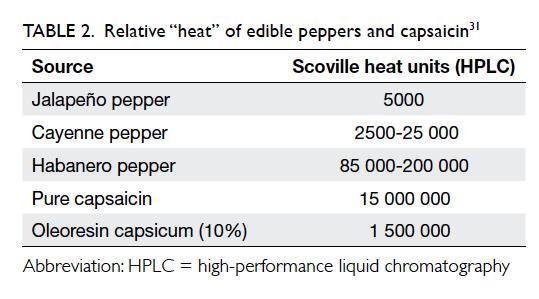Table of Contents
- Regulatory Changes and Their Impact on Pepper Spray Formulations
- Health and Safety Concerns Driving Ingredient Concentration Limits
- Best Practices for Manufacturers in Adapting to New Compliance Standards
- Guidance for Consumers on Selecting Pepper Spray Products Under Revised Rules
- Concluding Remarks
Regulatory Changes and Their Impact on Pepper Spray Formulations
Recent government mandates have introduced stricter limitations on the allowable concentration of capsaicinoids-the active irritant compounds-in pepper spray products. These regulatory revisions aim to enhance safety and reduce the potential for severe injuries while maintaining effective self-defense capabilities. Manufacturers are now required to reformulate their sprays to comply with the new maximum thresholds, which has led to a substantial transformation in product composition across the industry.
Key adjustments include:
- Lowering the permissible concentration of oleoresin capsicum (OC) extracts.
- Implementing rigorous batch-testing protocols to ensure compliance.
- Introducing clearer labeling requirements regarding strength and usage guidelines.
These changes not only affect the chemical makeup of the sprays but also impact production costs and product availability. Consumers and law enforcement agencies alike will need to stay informed about the evolving shelf offerings to ensure they are equipped with compliant and effective defense tools.
Health and Safety Concerns Driving Ingredient Concentration Limits
Recent regulatory adjustments have placed a spotlight on the health risks associated with highly concentrated active ingredients in pepper sprays. Scientific studies reveal that elevated potency levels increase the likelihood of severe respiratory distress, skin burns, and prolonged eye irritation among exposed individuals. These findings have prompted lawmakers and safety organizations to advocate for stricter limits to protect both users and the general public from inadvertent harm. Additionally, the lack of standardized concentration benchmarks has complicated medical treatment protocols following exposure incidents, further emphasizing the need for unified safety thresholds.
In response to mounting evidence, the new rules emphasize several key safety measures, including:
- Maximum allowable concentration ceilings for capsaicin and related compounds.
- Clear labeling requirements to inform users of the ingredient potency.
- Mandatory safety testing prior to market release to ensure compliance.
Best Practices for Manufacturers in Adapting to New Compliance Standards
Manufacturers facing the challenge of adjusting to stricter ingredient limits in pepper spray formulations should prioritize comprehensive regulatory audits to ensure full compliance. This involves systematically reviewing existing product components against the new legal thresholds and engaging with chemical experts to reformulate products where necessary. Staying proactive with compliance not only prevents costly penalties but also enhances consumer trust by demonstrating a commitment to safety and transparency.
To streamline adaptation, companies can adopt key strategies such as:
- Implementing robust quality control mechanisms to monitor ingredient concentrations continuously.
- Investing in employee training programs to keep teams informed about regulatory changes and proper handling procedures.
- Establishing direct communication channels with regulatory bodies for timely updates and clarifications.
- Utilizing advanced data management software to track product specifications and compliance documentation.
By embedding these practices into their operational framework, manufacturers can maneuver regulatory shifts efficiently and maintain competitive positioning in a rapidly evolving market.
Guidance for Consumers on Selecting Pepper Spray Products Under Revised Rules
Under the newly implemented regulations, consumers should carefully evaluate pepper spray products based on their active ingredient concentrations. Authorities have mandated stricter limits on capsaicinoid content, a key irritant compound, to balance effectiveness with safety. When purchasing, prioritize products that clearly disclose their capsaicinoid percentage on the label, ensuring compliance with the updated standards. This transparency allows users to make informed decisions aligned with personal defense needs and legal requirements.
Additionally, experts recommend considering the following aspects to optimize safety and performance:
- Expiration Dates: Choose sprays with longer shelf lives to maintain potency.
- Spray Range and Pattern: Verify that the spray delivery meets your situational requirements, whether stream, fog, or gel.
- Ease of Use: Opt for ergonomic designs with straightforward safety mechanisms for quick deployment under stress.
- Certification Labels: Look for products tested and certified by recognized regulatory bodies.
Concluding Remarks
In summary, the newly implemented regulations mark a significant shift in the oversight of pepper spray formulations, aiming to balance public safety with effective self-defense options. As authorities enforce stricter ingredient limits, manufacturers and consumers alike will need to adapt to these changes. Ongoing monitoring and evaluation will be essential to ensure that the updated standards achieve their intended goals without unintended consequences.Check Our Other Blogs
- StunGun – Your Trusted Source for Stun Guns, Laws, and Self-Defense Tips
- PepperSprayLaws – Your Trusted Resource for Pepper Spray Information
- StunGunLaws – Your Trusted Guide to Stun Gun Legality and Safety




